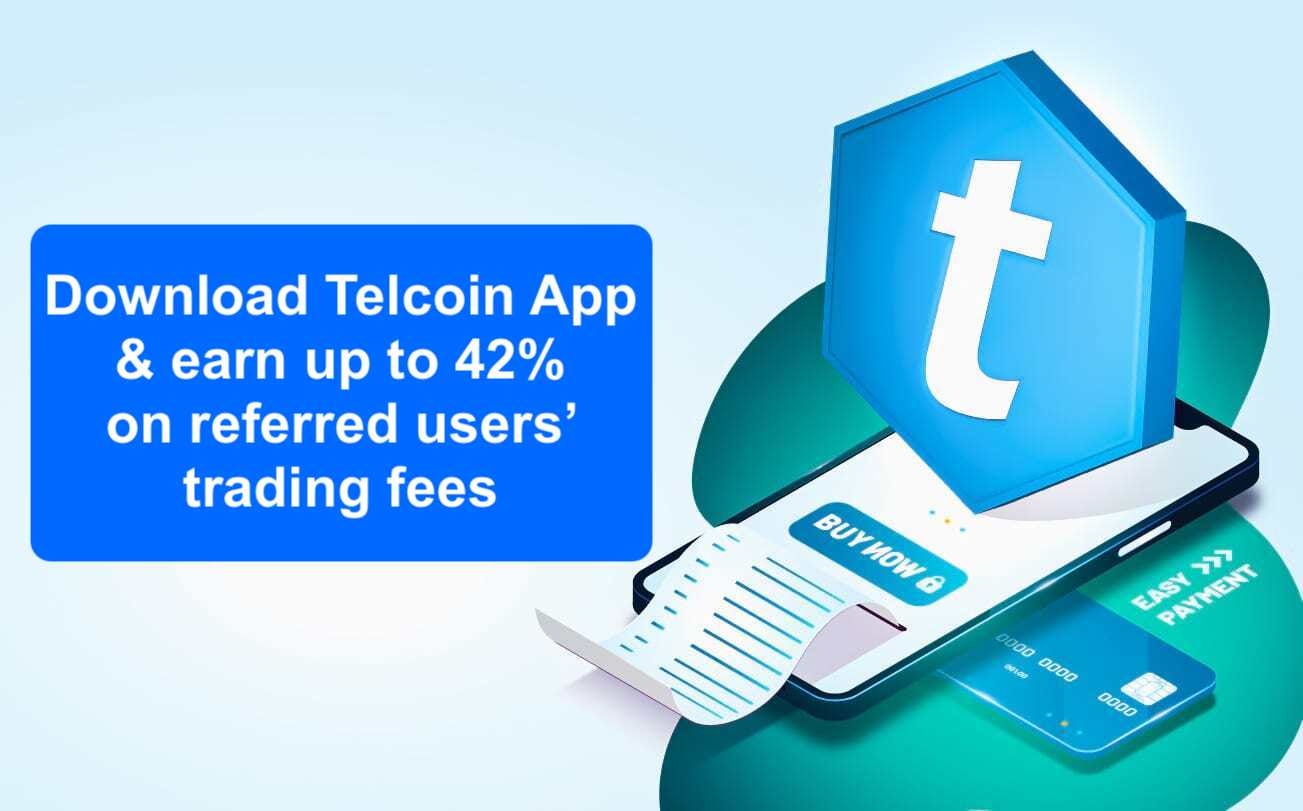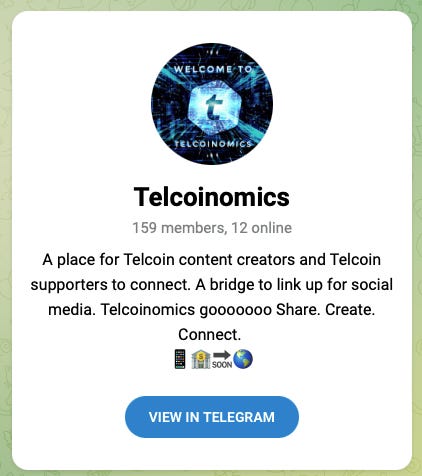As crypto matures and the junk is flushed out - Telcoin will be the first crypto company to achieve genuinely global corporate adoption, at a very large scale; and it will be legal. Rivendell Network will be the vehicle through which such adoption is achieved. This adoption will drive the market cap and value of TEL to proportionally higher levels than where it currently is.
Let me explain, starting in the beginning.
What is Rivendell
According to Telcoin, Rivendell is an open Ethereum sidechain run, validated, and secured by Mobile Network Operators (MNOs). MNOs are companies that offer wireless communications services. They are sometimes referred to as wireless service providers, wireless carriers, cellular companies, or mobile network carriers. (For this article, I'll refer to MNOs as cellular companies for ease of reading). Rivendell is a scalable blockchain financial service for mobile networks that enables them to provide blockchain-based, non-custodial financial services to their subscribers - without needing to be a bank or custody funds. This includes financial services such as domestic payments, international remittances, asset exchanges, lending and money markets, regulated securities, and a full stack of financial applications. Due to the permissionless and interoperable nature of Rivendell, cellular companies can launch standalone and full-stack automated financial applications that can be customized to meet the demands of your local market.
Simply put, Telcoin is creating a platform on the blockchain through which cellular companies can offer compliant, regulated financial services without needing to be a bank, having banking licenses, or needing to hold custody of clients' funds. This is related to but bigger than mobile money and mobile banking. According to the IMF, Mobile money is a pay-as-you-go digital medium of exchange and store of value using mobile money accounts facilitated by a network of mobile money agents. It is a financial service offered to its clients by a mobile network operator or another entity that partners with mobile network operators independent of the traditional banking network. A bank account is not required to use mobile money services—the only pre-requisite is a basic mobile phone. On the other hand, mobile banking is the use of an application on a mobile device to access and execute banking services, such as check deposits, balance inquiries, and payment transfers. The financial services offered through Rivendell are all-inclusive.
What makes Rivendell attractive for cellular companies?
There are many apparent advantages of Telcoin's Rivendell. Firstly, the custody issue. As you will have noticed, in the last few months, authorities have been hard on companies that take custody of users' funds without licensing and regulation. Take the Kraken case, for example. In 2019, the SEC argued that “Kraken has offered and sold its crypto asset “staking services” to the general public, whereby Kraken pools certain crypto assets transferred by investors and stakes them on behalf of those investors. When investors provide tokens to staking-as-a-service providers, they lose control of those tokens and take on risks associated with those platforms, with very little protection.” Without property regulation, this “staking” is in contravention of Section 5 of the Securities Act of 1933. Basically, it is illegal.
The same rules applied to Kraken can also be applied to cellular companies that provide unregulated financial services. Suppose a user transfers money to a cellular company's application or uses it for cross-border payments. In that case, the cellular company may be in contravention of regulations, including regulations such as the Travel Rule. Additionally, various regulations govern financial services, including legislation, regulatory bodies, and the role of international standards, licensing, the rules on liquidity, foreign investment requirements, liquidation regimes, and recent trends in the regulation of banks.
Offering mobile financial services is simply not child's play, and most cellular companies would be found wanting.Telcoin's offer to these companies in this regard, therefore, is twofold: a) the companies do not need to take custody of funds, and b) they do not need the financial services licensing. By working with Telcoin, they can still offer the same services and obtain the same revenues without all the legal and custodial hustles. This model is currently being tested through Telcoin staking. In this regard, I have placed my crypto on the blockchain through the Telcoin app. It is not in Telcoin's custody. I can also send my crypto to anyone using the Telcoin app – through the blockchain. In the most basic terms, these transactions are similar to me handing cash to you using a transparent envelope. We don't need a banking license to do that. The envelope is the blockchain, and the cash is crypto. No one other than us has custody of our money. The cellular companies will offer the hardware (the mobile device) and connectivity (the network). Telcoin will offer a platform that connects with the blockchain.
Given the recent SEC activities, I bet my TEL that more cellular companies will opt for the Telcoin model and likely join the Rivendell Network. Remember, Telcoin has partnered with at least 22 cellular companies operating in over 16 countries. These are giant corporations such as MTN, Digicel, Aitel, and GCash, to list a few.
In addition to licensing advantages, other benefits of joining the Rivendell include blockchain transaction validation and settlement platforms globally, access to a growing DeFi ecosystem, stabilization of fees, enhanced processing speed, self-custodial financial services, transparency — all of which are gained through a truly distributed and decentralized ecosystem run by trusted and regulated entities. This model, according to Rajesh Sabari, “is already making waves in the industry — and in particular, with the GSMA, the telecom industry’s largest association, which counts more than 750 global MNOs as members.” Telcoin’s pitch has been well received, and Telcoin has held one-on-one workshops with telco entities. Telcoin’s “value proposition resonated strongly, both on the remittance front and on our burgeoning blockchain validation offering. Telcoin has “also successfully onboarded (or are in the final stages of onboarding) several new gateway and on-ramp partners in the fintech space that will help us scale and diversify connectivity into international markets.”
In short: cellular companies are buying into Telcoin’s Rivendell.
TEL will get busy
Value proposition, as mentioned above, is important for these companies. But the most crucial component is the revenue. Will Telcoin's value proposition enhance their revenues? This question is difficult to address in the absence of thorough market analysis and trends, and modeling to demonstrate the impact of Telcoin's blockchain transaction validation and settlement platforms. However, if the value proposition has resonated strongly and onboarding processes are underway, then it is safe to believe that Telcoin's offer will drive high revenues for cellular companies.
Remember, they are already making good profits from mobile money. For example, transactions on MTN's MOMO (Mobile Money) went up 67% year on year to $176 billion. That's massive, and any potential to grow it will be taken with both hands. This is where Telcoin comes in.
A component of revenues that Telcoin has guaranteed for cellular companies comes from Telcoin directly, namely, TEL issuance. TEL is the native utility token of the user-owned, decentralized Telcoin Platform. It functions as the native medium of exchange, reserve, and protocol asset of the platform, with both productive and consumptive utilities for market participants across each layer, including Rivendell. In other words, transactions on Rivendell will utilize TEL as a native medium of exchange, reserve, and protocol asset, with TELx as the liquidity engine. Think about that. Earlier, I said non-custodial transactions would be run on the Telcoin application. This means millions of users from different cellular companies who use the Telcoin application will facilitate their transactions through TEL as a native medium of exchange, reserve, and protocol asset. What volumes are we talking about? Massive! In addition to this, within Rivendell, cellular companies will secure the network, and those who perform honest computation and maintain 100% network uptime will receive TEL issuance and transaction fees. TEL will also be used as the unit of exchange to quantify and pay the costs of the consumed computational resources (gas costs) on the Rivendell Network.
Simply put, TEL will get busy.
TEL Incentives to cellular companies
Telcoin has committed to offering incentives to cellular companies on the Rivendell network. But why would multi-million dollar global companies find value in receiving TEL incentives? Consider this, according to Telcoin’s issuance model, 70% of TEL will be issued for User Activity & Validator Issuance (i.e., 50%) and developers (i.e., 205). Regarding User Activity & Validator Issuance, Telcoin says, “GSMA Member Mobile Network Operators (MNOs) will earn an ongoing pro-rata percentage of weekly issuance based on how many blocks they secured during the week, their user's transaction volume and activity.” This is to “coordinate GSMA and MFS partners around the Telcoin Platform as the primary mechanism for distributing financial services to their customers, and reward them for marketing the platform to their users based on real economic activity.” Concerning developers, “MNOs, MMSPs, and DeFi protocols with live applications on Rivendell earn an ongoing pro-rata percentage of weekly issuance-based on their application usage during the period.” The objective is to “coordinate financial protocol, infrastructure, and application developers around Rivendell, and to reward them for building systems that power economic activity.”
All in all, a large chunk of TEL will be issued to GSMA Member Mobile Network Operators. Based on Rajesh Sabari's report, this (issuance) value proposition resonated strongly with them. But WHY? TEL is worth a measly $0.003!
Well, here are some questions I would like to ask you as a TEL holder; perhaps these will help you answer my WHY question above:
What would be TEL's volume and market cap when Rivendell is fully operational? In other words, when multi-million dollar global cellular companies have fully embraced Telcoin's Rivendell, what will the volume of TEL transactions be?
You’ll appreciate that the GSMA has more than 750 global cellular companies as members. You’ll also appreciate that in 2022, more than "1.35 billion registered mobile money accounts were processing $1 trillion in transactions annually. That is almost $2 million per minute,"; and these figures are growing. Considering this, what would be TEL's volume and market cap when Rivendell is fully operational?
At what value would cellular companies derive maximum benefit from TEL? For example, TEL reached its all-time high in May 2021 at $0.064. Suppose an cellular companies was earning User Activity & Validator Issuance at the time. Would that value give them sensible value from a revenue perspective, considering the work that goes into securing blocks and maintaining high user transaction volume and activity? Would TEL at the current $0.003 resonate strongly with them? Would a potential TEL at $1, $2, or $5 resonate even stronger? What do they know about the potential of TEL that resonates strongly with them?
I have my ideas on these questions, but I prefer not to offer them at this stage, lest we be overly speculative. I'll let Telcoin roll out Rivendell and see where it goes after a full twelve months of operation. Until then, I hold.
Disclaimer
This page will be updated as and when new information becomes available.
The information and content (collectively 'information') provided herein are general information. The authors do not guarantee the suitability or potential value of any information or particular investment source. Any information herein is not intended, nor does it constitute financial, tax, legal, investment, or other advice. The authors have no affiliation with Telcoin or other persons or companies referred to in this article. The information in this article is based on the sources used.









